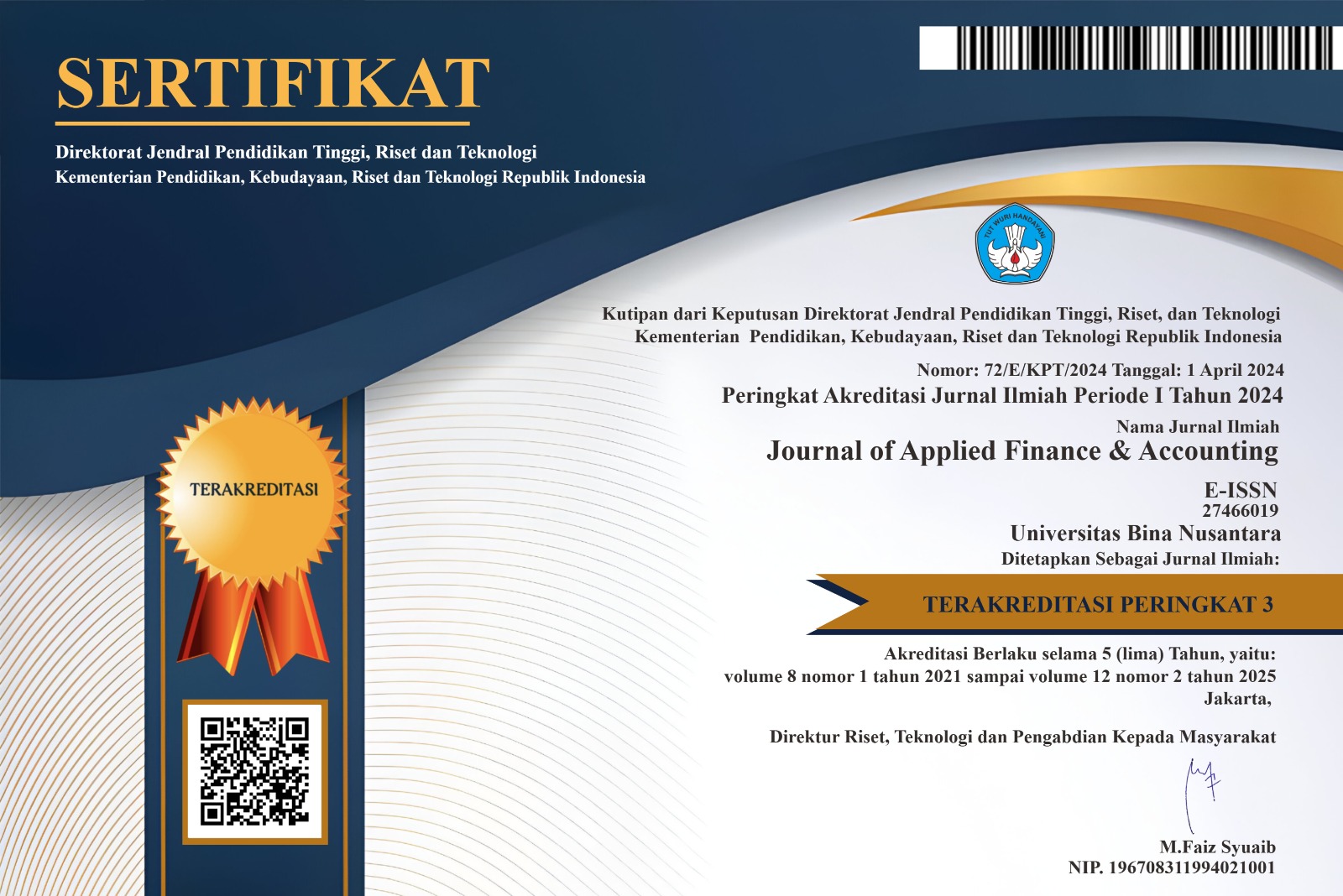REAL OPTIONS APPROACH: A BANK ACQUISITION BY BANK X
DOI:
https://doi.org/10.21512/jafa.v3i1.162Keywords:
mergers and acquisitions, real options, black-scholes model, binomial.Abstract
Indonesia offers a lot of promising growth opportunities and particularly to the banking industry, a combination of attractive macro-economic conditions and introduction of new regulatory policies as well as reformation to consolidate and strengthen the banking sector primarily by M&A activity provides an attractive backdrop for acquisition of Indonesian banks by foreign investors. In this paper, we introduce real options theory as an alternative to a traditional project valuation for a bank acquisition that would allow the acquiring firm to recognize the options embedded in their investments. The objective of this case study is to analyze, from real options perspective, whether the acquisitions of the target firm compliment the acquiring firm. The methods use for the analysis are DCF, Black-Scholes and Binomial Lattice that would help determine the project real value, which result suggested that the acquiring firm should reconsider their options. On this thesis, the DCF method suggesting that the acquisition of Bank Y by Bank X does increase the value of Bank X but there would not be added value on the synergy itself. While from the real options perspective, the project value (with and without real options flexibility) is worth less than the target firm underlying assets and has doubtful prospect.
Downloads
Published
Issue
Section
License
Authors who publish with this journal agree to the following terms:
Authors retain copyright and grant the journal right of first publication with the work simultaneously licensed under a Creative Commons Attribution License that allows others to share the work with an acknowledgement of the work's authorship and initial publication in this journal.
Authors are able to enter into separate, additional contractual arrangements for the non-exclusive distribution of the journal's published version of the work (e.g., post it to an institutional repository or publish it in a book), with an acknowledgement of its initial publication in this journal.
Authors are permitted and encouraged to post their work online (e.g., in institutional repositories or on their website) prior to and during the submission process, as it can lead to productive exchanges, as well as earlier and greater citation of published work (See The Effect of Open Access).




